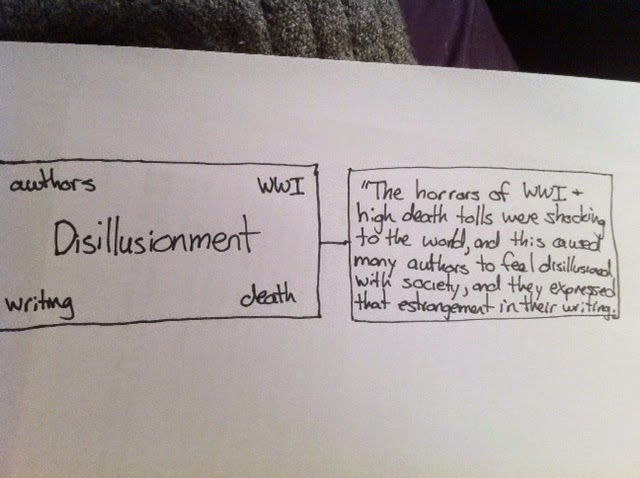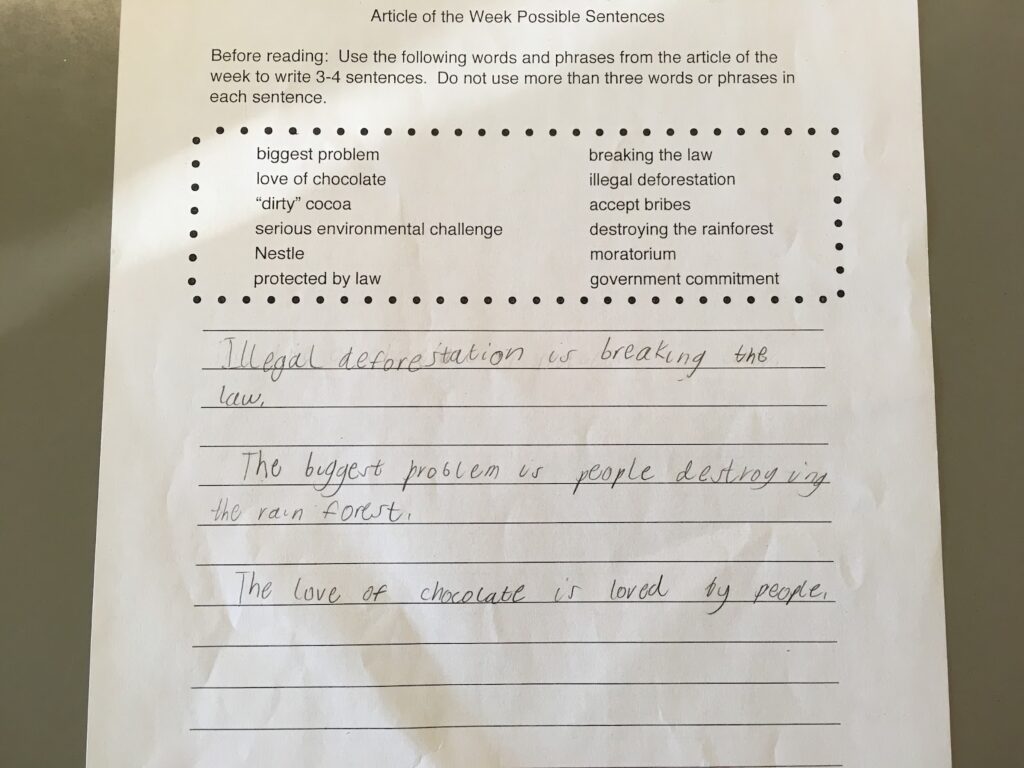“Literacy is not just the responsibility of ELA teachers; it is every teacher’s responsibility.” This is my administrators’ belief statement, and we spent the last several years implementing this belief in classrooms throughout our building. From music to math to science and social studies, everyone writes.
But it wasn’t always like this, and teacher buy-in was a slow and painful process. Before this, our focus was on essay writing. Every teacher in every classroom “assigned” essays. We learned that many of our students struggled at the sentence level, and it is difficult to write an essay when sentence and paragraph structures are weak. Looking at the data, we realized we needed to adjust our focus to our students’ needs.
Our plan was like a two-pronged fork: Improve writing and use writing to improve content-area learning. We prioritized three writing strategies: sentences, summaries, and quick-writes as low-stakes writing tasks.
Sentences
Sentence combining is a quick activity that can be used in any content area. It provides students with practice rearranging and manipulating sentences. Teachers take a sentence from a content-area text and break it into separate sentences that students rearrange and combine into one. This creates opportunities to learn basic sentence parts or to explore more complex sentence structures.
Example:
Polar bears live in the Arctic.
The Arctic has a cold climate.
Polar bears have traits that help them survive.
Polar bears have transparent fur.
Polar bears have a thick layer of blubber.
Polar bears have traits that help them survive in the cold Arctic climate, such as transparent fur and a thick layer of blubber.
Using conjunction sentence stems helps students write compound and complex sentences. Plus, they provide them with a way to think more analytically. We created sentence stems with the conjunctions because, but, and so. Using these three sentences, students will understand why something is true, a change or an opposite fact, and a cause-and-effect relationship.
Example:
Fungi are important decomposers because______________.
Fungi are important decomposers, but __________________.
Fungi are important decomposers, so ___________________.
Sentence expansion or elaboration helps students write longer sentences with more sophisticated structure. One way to expand sentences is to use questions such as who, what, where, when, how, and why.
Example 1:
Show two solutions to a math problem, one correct and one incorrect. Give the students a kernel sentence: She made a mistake.
Who: Student A
When: step 2
Why: didn’t find a common denominatorSentence: Student A made a mistake in step 2 because she forgot to find a common denominator before she added the two fractions.
Example 2:
If students read a text about the Mayan civilization, start with this kernel sentence: They created.
Who: the Mayan civilization
What: a writing system
When: between 250 and 900 CESentence: Between 250 and 900 CE, the Mayan civilization created a writing system called hieroglyphics.
Example 3:
Teachers can project a picture from their content area and provide question stems.
What: A Starry Night
Who: Vincent van Gogh
When: June 1889
Where: France, from a windowSentence: In June 1889, Vincent van Gogh painted A Starry Night from a window in France.
Summaries
Summary writing is an instructional strategy that improves student learning. It can be as challenging as writing a paragraph or as simple as writing one word.
- One-Sentence Summary—A one-sentence summary is similar to a central idea statement where the students write the key ideas in one sentence.
- Magnet Summary—A magnet has a one-word topic in the center of an index card and acts as a magnet to attract other key ideas. Students reread the text and add words and phrases. On the back of the card, students write a summary sentence.

A student example of a magnet summary. - Window Quotes—Students capture the big idea of the text by writing a window quote like those seen in magazines.
- Hashtag Summary—Students write a hashtag using one to three words to summarize a text.
- Storyboard Summary—Give students a storyboard and have them doodle or draw the most important parts of the text.
Often when teachers mention summarizing a text, they hear groans from their students. We found that when teachers mixed up the summary writing and added a little fun, summary writing wasn’t so boring.
Quick-Writes
Our teachers found ways to add low-stakes writing into their daily instruction. This type of writing quickly and easily gives teachers formative assessment data. The best part about quick-writes is that teachers typically do not grade them.
Quick-writes are short, informal writing tasks that can be done in a short amount of time and can be used in all content areas. The goal is to get kids to write about the content. Our teachers used quick-writes in several ways. Some opened a new unit with an essential question and had students write for three to four minutes about their answers to the question. Social studies teachers showed an image and had students write what the image made them think about or prompted students to write a “See, Think, Wonder” response. Math teachers showed a problem, and students wrote how to solve it.
Students can write about content vocabulary, but this does not include writing down dictionary definitions. Vocabulary activities might compare two kinds of rocks in science or draw a picture of the music terms allegro and largo. Teachers could show a vocabulary word and have students write all they know about that word in a minute.
Possible sentences is a reading strategy from Kylene Beers and Bob Probst that can be used as a quick-write. Before reading a text, the teacher creates a list of words and phrases. Students use the words in the list to write two to four sentences on what they think the text will be about. After reading, students can monitor and adjust their comprehension.

Entrance and exit tickets are another example of quick-writes that show teachers whether students met the learning objective for the day or have any lingering questions.
After focusing on intentional writing in the content areas, teachers learned two lessons:
- Students understood the content and expressed their learning through writing better.
- Students also understood that writing isn’t just for ELA classes; writing happens in all classes.
Their writing skills improved, and as they moved through the upper grades, this growth allowed students to write essays with greater confidence. Writing is an important part of learning content. Writing doesn’t have to be long; it just has to “belong” in every classroom.




